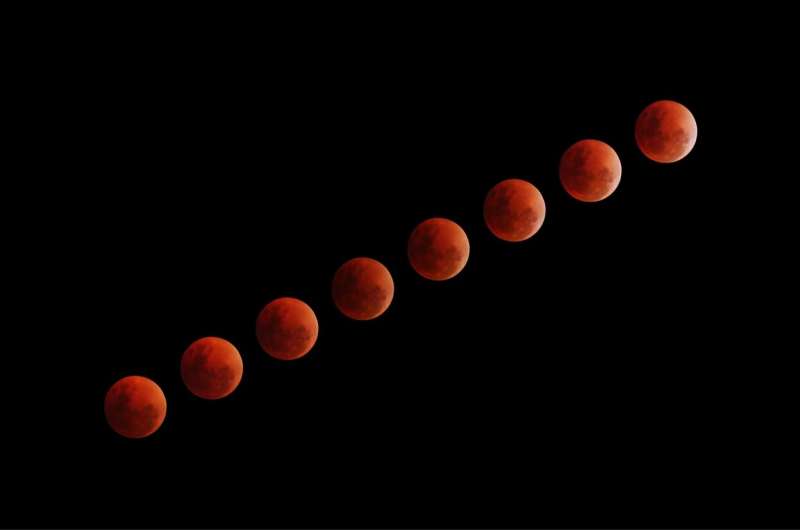Buttes on Mars may serve as radiation shelters

Mars has a "bad reputation" for its high exposure to radiation and it has neither a magnetic field nor a thick atmosphere to shelter its surface from high energy particles from outer space.
In a study published in Geophysical Research Letters, Guo Jingnan from University of Science and Technology of China (USTC) of the Chinese Academy of Sciences, and international collaborators, analyzed the data from the Radiation Assessment Detector (RAD) on the Curiosity rover, and proposed a possible way to mitigate radiation on Mars.
The Curiosity rover launched in November, 2011 and landed on Mars in August, 2012. It was dedicated to searching for the elements of life on Mars. In September, 2016, Curiosity parked close to a butte and detected a reduction in radiation dose, and when Curiosity traversed far from the butte, the dose came back to normal. The researchers attributed this change in radiation dose to topographical variations.
They then plotted the panoramic sky visibility map of RAD for further investigation. They found that about 20% of the sky was blocked when Curiosity rover was near the butte, and the number was less than 10% before getting close to the butte, which suggested that surrounded buttes did shield a portion of radiation.
Moreover, the researchers developed a model of the zenith angle dependence of the dose through Monte Carlo model, and found that the dose reduction predicted by this model is significantly higher than the observation.
They explained that the obstructing butte may contribute to additional albedo radiation, which was reflected by the terrain of Mars and emitted backwards, and it is not completely safe hiding beside a butte because although the radiation from above can be mitigated, the secondary radiation reflected by the butte may increase.
Finally, based on RAD observation and a radiation transport model, the researchers calculated the albedo radiation of the flat terrain on Mars which is about 19% of total surface dose.
This study determined the influence of topology on radiation dose on Mars and revealed the influence of buttes on albedo radiation on Mars, which contributes to the understanding of the radiation environment on Mars and the development of possible mitigation strategies.
More information: Jingnan Guo et al, Directionality of the Martian Surface Radiation and Derivation of the Upward Albedo Radiation, Geophysical Research Letters (2021). DOI: 10.1029/2021GL093912
Journal information: Geophysical Research Letters
Provided by Chinese Academy of Sciences





















